5 December 2017
The quarry in Contessa Gorge
Posted by Callan Bentley
After visiting Bottaccione Gorge and reuniting with the K/Pg boundary, my summer geologizing with Alan Pitts took me next to Contessa Gorge, where we saw this lovely wall of stratigraphy and structure exposed in a quarry’s cut:
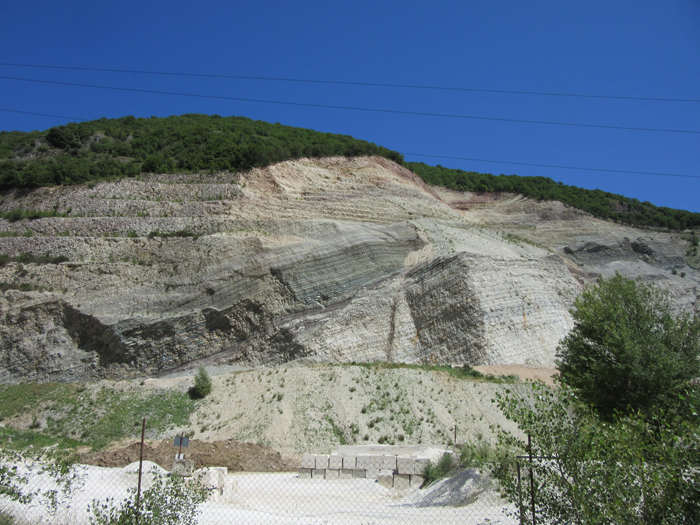
Let’s zoom in a bit and see what there is to be seen:
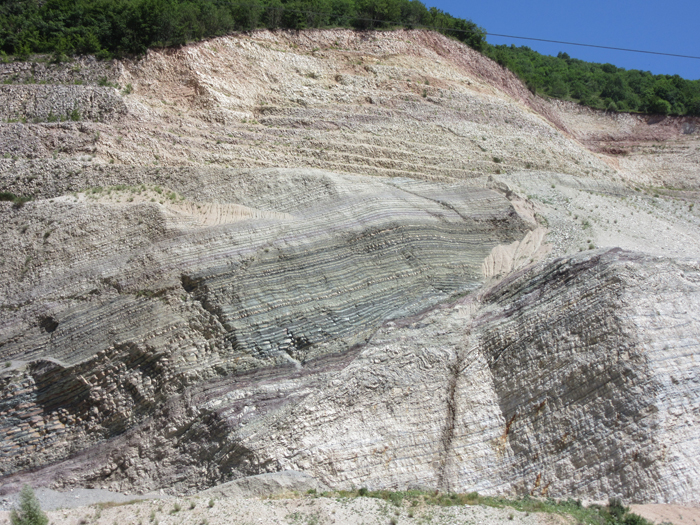
Here it is annotated:
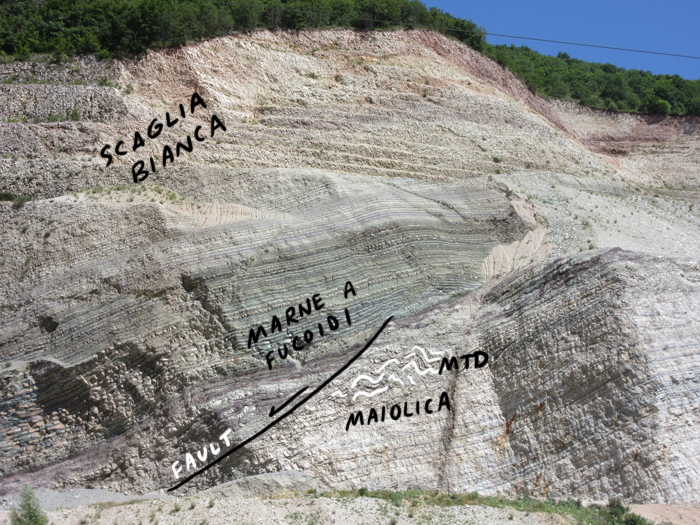
“Maiolica,” “Marne A Fucoidi,” and “Scaglia Bianca” are all names of different stratigraphic units, different formations in the central Apennine stratigraphic sequence. The Marne A Fucoidi is a beautiful mix of deep green and maroon. It’s alternating shale-dominated layers and calcareous-dominated layers.
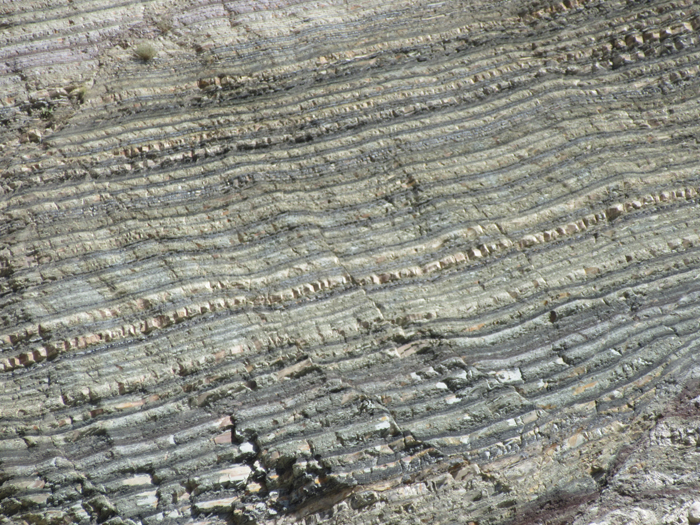
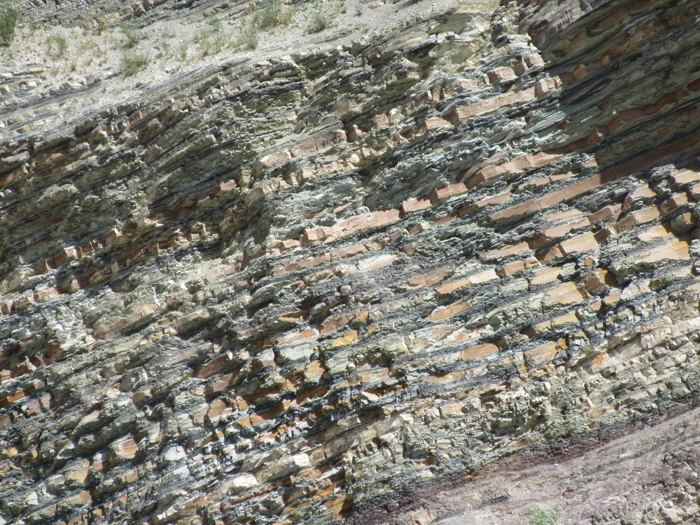
The units above and below tend toward white (“bianca” in Italiano) but the upper unit, the Scaglia Bianca, has a distinctive anoxic layer within it, the Bonarelli Level, that helps distinguish it from the lower unit, the Maiolica. (Sorry, I didn’t take a photo of it.)
All this stratigraphy is well and good — but I was here for the structure!
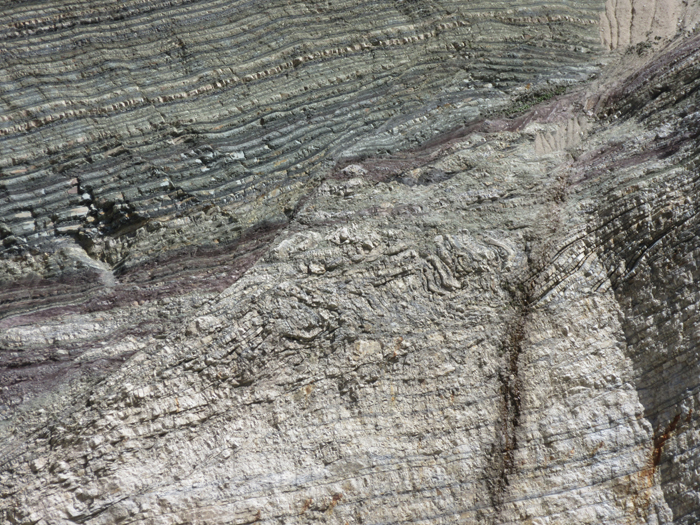
…And annotated:
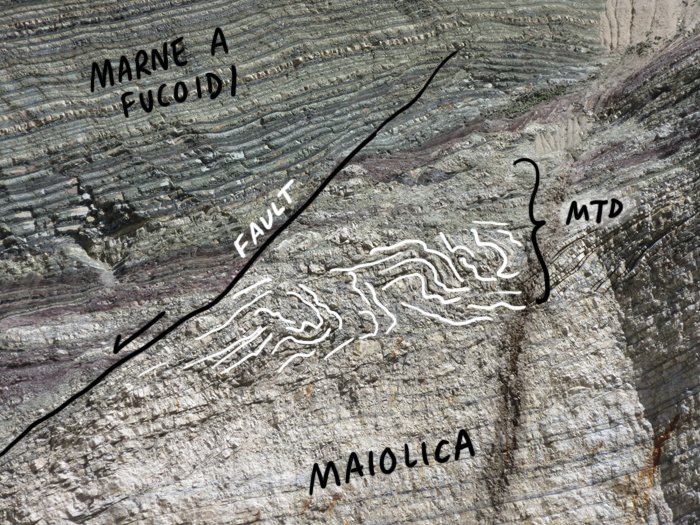
“MTD” here stands for “mass transport deposit” – a set of sedimentary layers that slumped downward and crumpled up deeper into the basin when the sediment was still soft (prior to lithification). Alan and I have enjoyed puzzling over another MTD in West Virginia‘s westernmost Valley & Ridge province. Here in Italy, the pelagic limestones seem to have cohered a bit better in layers, while the West Virginia example saw total disaggregation of the sandstone layers into segments that folded up on themselves, wrapped up in a matrix of squishy mud. The Italian example is much better behaved:
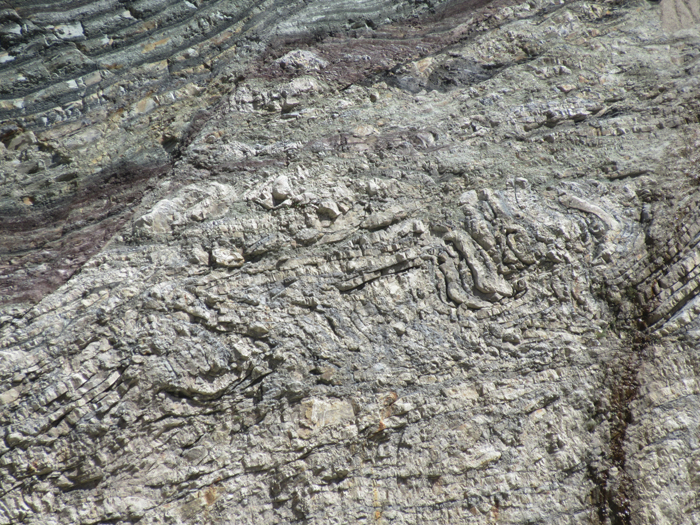
This is interpreted as syndepositional faulting and deformation. It’s not thought to be directly tectonically induced.
The quarry was a treat to see. I love outcrops like this – beautiful, with some structure and some stratigraphy, and something to compare to other places.


 Callan Bentley is Associate Professor of Geology at Piedmont Virginia Community College in Charlottesville, Virginia. He is a Fellow of the Geological Society of America. For his work on this blog, the National Association of Geoscience Teachers recognized him with the James Shea Award. He has also won the Outstanding Faculty Award from the State Council on Higher Education in Virginia, and the Biggs Award for Excellence in Geoscience Teaching from the Geoscience Education Division of the Geological Society of America. In previous years, Callan served as a contributing editor at EARTH magazine, President of the Geological Society of Washington and President the Geo2YC division of NAGT.
Callan Bentley is Associate Professor of Geology at Piedmont Virginia Community College in Charlottesville, Virginia. He is a Fellow of the Geological Society of America. For his work on this blog, the National Association of Geoscience Teachers recognized him with the James Shea Award. He has also won the Outstanding Faculty Award from the State Council on Higher Education in Virginia, and the Biggs Award for Excellence in Geoscience Teaching from the Geoscience Education Division of the Geological Society of America. In previous years, Callan served as a contributing editor at EARTH magazine, President of the Geological Society of Washington and President the Geo2YC division of NAGT.
I’m not sure where the term ‘la contessa” originated, but this bed is famous in the Apennines marnoso arenacea unit: a “megabed” that can be seen and traced for ca. 120 km.
Nice review of the Lower Cretaceous outcrop in my backyard 😉
I suggest to read: Menichetti M. (2016). Early Cretaceous tectonic event in the Adria: Insight from Umbria-Marche pelagic basin (Italy). GSA Sp.Paper 524 vol. 524, p. 35-55, ISBN: 978-0-8137-2524-6, doi: 10.1130/2016.2524(04), where details and an interpretation of the outcrop are reported.
The term “Valle della Contessa” (Countess Valley) is an historical name belongs with a local legend about a Countess was traveling the valley. Few historians related the Countess with Battista Sforza, Federico da Montefeltro wife of XV Century.
The “Contessa Layer” is a turbiditic Langhian (Miocene) megabed outcrops in the upper part of the valley and described by Ricci Lucchi & Pialli, 1973.
Thank you, Marco!